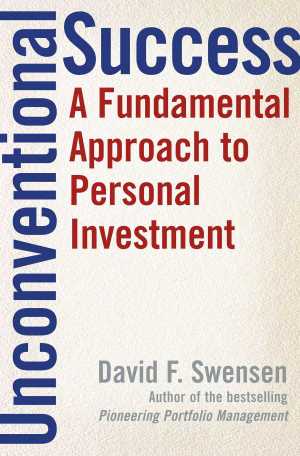Here Are The 20 Best Income Portfolios Built with ETFs for 2023
If you're looking for income then you should look at this list of the 20 best income portfolios.
Are you looking for a well-rounded, simple investment portfolio that has good returns? Lazy investment portfolios can help you. Here are five excellent reasons why you should use a lazy portfolio.
If you’re new to investing and want a true, tried and tested portfolio, look no further! These lazy portfolios promise to give you a mostly hands-off approach to investing. They offer a lot more than that, however. Dive in to know the five excellent reasons why you should use a lazy portfolio.
A lazy portfolio is just a portfolio that gives you a hands-off approach to investing for long periods. At most, they require a yearly rebalance and nothing else.
The balanced portfolios consist of two asset classes, stocks and bonds are the simplest portfolios to implement. What they lack in flair and sexiness they make up for in simple effectiveness. They can be modeled to almost any risk level.
John Bogle, the supreme hero of the investing world, recommends that you hold a total stock market fund and a total bond fund. The percentage of bonds should equal your age, so a 50-year-old should hold 50% VTI and 50% BND.
David Swensen of the Yale Endowment fund sets forth the portfolio in his book Unconventional Success: A Fundamental Approach to Personal Investment.

David Swensen is genuinely one of the good guys in investing in advocating fiduciary principles, low-cost index investing, and being humble about one’s knowledge.
William Bernstein, a former doctor, investment consultant and an all-around good guy in the investing world has presented a host of portfolios through his career. His book,The Four Pillars of Investing: Lessons for Building a Winning Portfolio is required reading on investing. His investing philosophy is broad diversification, common sense and a realistic expectation of future returns.
Other books that are highly recommended are Rational Expectations: Asset Allocation for Investing Adults and The Intelligent Asset Allocator: How to Build Your Portfolio to Maximize Returns and Minimize Risk.
The very famous Coffeehouse portfolio is categorized as a Lazy Portfolio due to its ease in its implementation and maintenance. It is featured in the book.
Bill Schultheis has a beautiful website. Check out his book by the same title The Coffeehouse Investor: How to Build Wealth, Ignore Wall Street, and Get On with Your Life.
Frank Armstrong is the author of The Informed Investor: A Hype-Free Guide to Constructing a Sound Financial Portfolio.
In his book, he presents a the_Ideal Index Portfolio_. Frank Armstrong’s portfolio is tilted towards small-cap and value stocks.
Scott Burns, author ofSpend’ Til the End: The Revolutionary Guide to Raising Your Living Standard is a newspaper columnist and author who has covered personal finance and investments for over 30 years.
Scott Burns is known for creating the “Couch Potato Portfolio” investment strategy. In addition to the now-famous couch potato portfolio, he suggests nine other portfolios on his AssetBuilder site.
We highlighted the Couch Potato portfolio in the article The Couch Potato Portfolio; Two Fund Supremacy?
The Couch Potato portfolio is the “little brother” of Margaritaville.
Now for the reasons why you should invest in a lazy portfolio!
Investing is not hard. Not anymore. And certainly not with ready to portfolios like we offer here on portfolioeinstein.com.
Using a lazy portfolio makes it even easier. They have few asset classes, and you can quickly get an overview of the portfolio.
There is some merit in making your portfolio complex. The complexity comes at a cost, however and may not be desirable.
The lazy portfolios do not contain any special asset classes, so in that regard they are also easy to understand. The laziest of them all has just two asset classes! Stocks and bonds – the two fund solution. Now that’s easy!
As you can see from the table above all the lazy portfolios provide respectable performance. To be sure you can get a higher return. See here for which portfolios have done better in the past.
But the higher returns also come with a cost in the form of a higher risk. You would have suffered a 37% drawdown in 2009 holding the S&P500, but you would only have experienced 20-28% with a lazy portfolio.
Take another look at the 2 funds lazy portfolio. It is the most simple and still has the highest performance! Now that’s lazy for you!
All of the portfolios above are tied to some of the most respectable people in the investing industry.
David Swensen is chief investment officer at the Yale endowment fund and offered his investment portfolio in the book David Swensen – Unconventional Success: A Fundamental Approach to Personal Investment. Read more on his portfolio in our article David Swensen Portfolio, Asset Allocation With A Punch.
Supreme investing hero John Bogle provides the two fund portfolio in his many books. One of them is a must-read –The Little Book of Common Sense Investing: The Only Way to Guarantee Your Fair Share of Stock Market Returns. You can find John Bogle’s portfolio in our article John Bogle’s Portfolio The Vanguard of Legends, How’s His Portfolio?
William Bernstein of the two lazy portfolios Cowards portfolio and the No-brainer is also one of the good guys in investing. His book William Bernstein: The Four Pillars of Investing: Lessons for Building a Winning Portfolio is required reading for any investor. Find all of William Bernstein’s portfolios in our article William Bernstein Portfolios: The Portfolio Giant.
Bill Schultheis is a well know author and investment advisor. His portfolio comes from his fabulous book The Coffeehouse Investor: How to Build Wealth, Ignore Wall Street, and Get On with Your Life and his website.
See also our article Bill Schultheis; Coffeehouse Portfolio, Relax And Get On With Your Life Portfolio?

Frank Armstrong offers Frank Armstrong’s Ideal Index portfolio in his book The Informed Investor: A Hype-Free Guide to Constructing a Sound Financial Portfolio.
Scott Burns, author of the book Spend’ Til the End: The Revolutionary Guide to Raising Your Living Standard is a newspaper columnist and author who has covered personal finance and investments for over 30 years. He is known for creating the “Couch Potato Portfolio” investment strategy. In addition to the now-famous couch potato portfolio, he suggests nine other portfolios on his AssetBuilder asset manager site.
All of the lazy portfolios have stood the test of time. They have survived the out-of-sample test. Meaning that they have proved viable after their initial construction, thereby excusing them of backtest bias or data snooping.
These lazy portfolios are portfolios that will serve you well for many years to come
We are investors, but we are human. We are subject to many biases when it comes to investing and money.
Some of these include:
There are many more biases, and most of them are detailed fantastically by Jason Zweig in his fabulous book, Your Money and Your Brain: How the New Science of Neuroeconomics Can Help Make You Rich.
We are all affected by biases, and they help us navigate the world. They are one of the reasons why so many active managers repeatedly, continuously, and consistently fail to beat the market.
James Montier has also written two excellent books on behavioral investing. One is The Little Book of Behavioral Investing: How not to be your own worst enemy and the other and more in-depth is Behavioural Investing: A Practitioner’s Guide to Applying Behavioural Finance.
If you are concerned with managing your personality or even know that you are prone to making dumb things with your money, know that you are not alone! The lazy portfolios can help you with this, however. Allocate money to one of the portfolios and stick with it, and you will dodge all those nasty biases!
If you want to go to the source of the discovery, I recommend Nobel laureate Daniel Kahneman’s undisputed authority on biases. It is the book Thinking, Fast and Slow. If you are eager for more, why not also read another Nobel laureate who helped shape the field of behavioral finance, Richard Thaler’s Misbehaving: The Making of Behavioral Economics.
There are many alternatives to a lazy portfolio.
Remember, a lazy portfolio is just a portfolio with a hands-off approach. As such most portfolios on portfolioeinstein are lazy portfolios. The hardest part (which isn’t so hard) is buying the ETFs or mutual funds.
Go here to see all the portfolios on portfolioeinstein.com and here to see the allocations.
If you need help with rebalancing, we got you covered with this cheat-sheet so you can rebalance every year and get it just right!
Other than that, we recommend looking at the many one-fund solutions that will get you a well-diversified portfolio in one fund. Target-date funds are an example of this. The article What Is The Best Target Date Fund?will help you here. iShares also has one-fund ETFs: AOR, AOM, AOA, AOK.
By now, you can answer this question. Only you can answer it, however.
Here are some questions to make your choice easier:
Lazy portfolios offer an easy solution to the complicated question of investing. Lazy portfolios provide good returns with low risk. They are made by reputable well known members of the investing community.
If you’re just starting or have become disillusioned by the financial industry, then go with a lazy portfolio.
